シクロデキストリンとは、環状オリゴ糖で、分子の外側は親水性で、内側は疎水
性である。従って、疎水性の低分子物質を、その分子の内側に取り込み、水溶化
しうる働きを持つ。
詳しくは、ブドウ糖が連なってできたオリゴ糖の両端が繋がり輪の形になってお
り、構造的には、フタと底のないカップのような分子である。そして、この空洞
部分に様々な分子を取り込んだり(包接)、逆に取り込んだ分子を条件に応じて
中からゆっくりと放出させたり(徐放)といった作用を示めす。この性質を応用
して様々な分野でいろいろな商品に利用されている。ちなみに、シクロデキスト
リンは、ジャガイモやトウモロコシ等のデンプンを原材料としている。
具体的な商品化の一例としては、臭い成分を取り込む作用を活かした消臭剤への
活用やカテキンやイソフラボンなどの有効成分の苦み渋みを低減する目的で飲料
への利用、また卵黄・バター等からコレステロールの除去効果を利用した食品分
野への応用などがある。さらに、機能性食品やサプリメントへの応用として、例
えば、コエンザイムQ10など難水溶性のため吸収されにくい機能性成分を、シクロ
デキストリンにより水溶性化させ吸収を高めるといった利用もなされている。
我々が最近興味をもち始めたのは、シクロデキストンをプロポリス、花椒エキス、
クルクミン、イバメクチン、納豆のビタミンK2(メナキノンー7)など難水溶
性の天然制癌(PAK遮断) 物質の水溶化に利用して、その体内への吸収を促進
するばかりではなく、その独特の苦味や匂いを軽減する働きを活用することにあ
る。さらに、シクロデキストンは、その空洞内に低分子だけを選択的に取り込む
ので、蛋白や多糖類などの高分子をも含む酵母や植物エキスから、低分子の抗癌
物質、例えば「ピノセンブリン」だけを選別/抽出しうるツールとしても利用できる
可能性があるからだ。
数年前、シクロケム (社長、寺尾啓二) が岡山理科大学との共同研究で、天然の
アルファー・シクロデキストン(alphaーCD、2%)によるクルクミンの水溶化(最大溶解度、
0。3 mg/ml) に成功したという報告が出ている。 動物実験で、この
CDークルクミンが実際に癌やNF腫瘍の増殖抑制に有効というデータはまだ出
ていないようだが、例えば、担癌マウス (体重20g)にこの溶液を週2回ずつ、
最大0。4 ml (つまり、6 mg/kg)腹腔注射して、有意な効果 (例えば、
50%以上の増殖阻害) が得られれば、この新しいクルクミン製剤による癌治療
の早期実用化が有望となろう。なお、クルクミンの水溶化は、リポソームやベー
タCD誘導体でも最近、米国やインドでそれぞれ成功しているが、これらの可溶
化剤(後者)は天然物ではないので、治療への実用化(各々の政府から市販許可
を得る)には、まだ時間が相当かかるだろう。
参考までに、リポソームによる包接の場合を一例としてあげると、担癌マウスに
クリクミン投与 (20 mg/kg) で、すいぞう癌の増殖が50%以上抑制される
という結果が、テキサスのMDアンダーソン癌センターから、つい最近報告されている。
Anticancer Res. 2009 Jun; 29: 1895-9.
Determination of minimum effective dose and optimal dosing schedule
for liposomal curcumin in a xenograft human pancreatic cancer model.
Mach CM, Mathew L, Mosley SA, Kurzrock R, Smith JA.
Department of Gynecologic Oncology, Division of Surgery, P.O. Box
301439-UNIT 1362, Houston, Texas 77230-1439, U.S.A.
jasmith@mdanderson.org
BACKGROUND: Curcumin is a food chemical present in tumeric (Curcuma longa)
that has pharmacological activity to suppress carcinogenesis and inhibits
multiple signaling pathways such as nuclear factor kappaB (NF-kappaB),
cyclooxygenase-2 (Cox-2) and interleukin-8 (IL-8). Oral curcumin has poor oral
bioavailability limiting its clinical activity;
however, a patent pending liposomal formulation of curcumin was developed
to improve drug delivery and has demonstrated activity in multiple cancers.
This study was designed to determine the minimum effective dose (MED)
as well as the optimal dosing schedule of liposomal curcumin
in a xenograft mouse model of human pancreatic cancer.
MATERIALS AND METHODS: The MED determination and optimal schedule was evaluated
in female athymic nude mice injected subcutaneously with MiaPaCa-2 cells.
Dosing was initiated at an average tumor size of 5mm. For the MED, mice
were treated with the following dose levels of liposomal curcumin: no treatment,
liposome only, 1 mg/kg, 2 mg/kg, 5 mg/kg, 10 mg/kg, 20 mg/kg and 40 mg/kg
given by tail vein injection three times weekly for 28 days. For the optimum
dosing schedule, three additional schedules were evaluated and compared
to the control of three times weekly; daily (five days per week), every
four days, and weekly for 28 days. All mice were weighed and tumor measurements
taken three times weekly to evaluate toxicity and efficacy.
RESULTS: The 20 mg/kg dose had the greatest decrease in tumor growth at
52% decrease in tumor growth when compared to no treatment control mice.
MED was determined to be 20 mg/kg and was used for the optimal dosing schedule
determination. Daily dosing and three times per week dosing had greater
inhibition of tumor growth with no discernable difference than once weekly
or every 4 day dosing. No toxicity was observed at any dose or schedule.
CONCLUSION: The MED for liposomal curcumin is 20 mg/kg given once daily
three times per week to achieve optimal tumor growth inhibition. This was
dose recommended for additional preclinical studies to define safety and
tolerability of liposomal curcumin in rat and dog models.
続く
2009年6月19日金曜日
2009年6月18日木曜日
"PIN-MITE": a new Pinocembrin (PIN)-rich health care product
Pinocembrin (PIN) content in Bio 30 is 11% (110 mg/g, dry weight), the highest
among propolis samples around the world. PIN is a flavonoid rich in pine
trees. A cluster of genes such as CHS and CHI for its biosynthesis was cloned
from red pine several years ago, and now it becomes possible to mass produce
PIN in E. coli or yeasts (S. cerevisiae or S. pombe), using glucose and
Phe as two major nutrient sources. We are planning to mass produce PIN in
yeast under the control of Hsp16 (heat-shock) gene promoter by heat shock
treatment, to make a new PIN-rich health care product called "PIN-Mite"
(anti-cancer/NF remedy or "elixir") as an alternative of Bio 30 or "Natto".
Why are we so interested in PIN? it has been known for some years that
like CAPE (caffeic acid phenethyl ester) , PIN is anti-inflammatory, suggesting
the possibility that it might block the kinase PAK1 which is essential for
inflammation, in particular calcium-release from mast cells. This year it
was reported by a Japanese group that like CAPE and ARC (artepillin C),
PIN blocks angiogenesis which also requires PAK1. Since both CAPE and ARC,
the major anti-cancer ingredients in propolis, block PAK1, it is almost
certain that PIN also blocks the oncogenic PAK1 signaling somehow. We are
asking a friend of mine in Japan to confirm this notion directly in cell
culture, by testing the effect of PIN on p-Raf 1 (Ser 338) which is a direct
indicator of PAK1's kinase activity.
However, like CAPE and ARC, PIN is water-insoluble (therefore its bioavailability
would be poor if alone). Lipids in propolis solubilize these water-insoluble
PAK1-blockers. That is a reason why CAPE in propolis such as Bio 30 is far
better (more effective) than CAPE alone in vivo. However, there must be
another reason. Bio 30 is 600 times more effective than CAPE alone in vitro
(cell culture). Bio 30 contains several polyphenols/flavonoids, in addition
to CAPE: among them PIN is the most abundant (110 mg/g), almost 10 times
more than CAPE (only 12 mg/g). Thus, PIN and several other anti-cancer flavonoids
in Bio 30 must work synergestically with CAPE to suppress the growth of
PAK1-dependent cancers/NF.
An OZ scientist developed a unique salty yeast extract called "Vegemite"
as a spread in 1922. It has been sold by a major food company called "Kraft"
. "Vegemite" for OZ school kids is equivalent to "peanuts butter" for US
counterparts. They are the most favourite spreads to make their lunch sandwiches
tasty. Well, can we make a hybrid of "Vegemite and PIN-rich yeast extract,
which we might call "PIN-MITE"? YES, WE CAN! Alternatively, can we make
another hybrid product of "Natto" and PIN-rich yeast extract? YES, WE CAN!
As previously mentioned, Natto is a traditional Japanese fermented sticky
soy-bean product, and the richest source of vitamin K2, in particular menaquinone-
7 (MK-7). Like PIN, MK-7 is most likely to block PAK1, and has been shown
to suppress the growth of PAK1-dependent cancers such as pancreatic and ovarian
cancers.
Since PAK1 shortens the life span, anti-PAK1 products in propolis such as
CAPE, ARC and PIN as well as MK-7 in Natto would prolong our life in good
health, protecting us from cancers, NF, inflammation such as asthma and
arthritis, and aging diseases such as AD (Alzheimer's).
Pearl S. Buck (1892-1973), the author of "Good Earth" and the 1938 Nobel
laureate in Literature for bridging the West and East cultures, once said:
a hybrid child is far better than each of his or her (more pure) parents,
because two different (complementary) set of genes cause a synergy. Barack
Obama has proved it at the 2008 US election. Better than the more Anglo-Saxon
(or WASP) candidates Hillary Clinton and John McCaine! Like PSB, Obama
understands both sides: East and West, Christian and Moslem, Poor and Rich,
Conservative and Liberal, Republican and Democrat, Old and Young. His vast
knowledge and tolerance is the major power for governing US and the rest
of our world. So his handsome picture (or PSB's young portrait) could be
used for the label of our new mighty spread "PIN-Mite" jars or bottles for
the world-wide promotion...
To be continued.
among propolis samples around the world. PIN is a flavonoid rich in pine
trees. A cluster of genes such as CHS and CHI for its biosynthesis was cloned
from red pine several years ago, and now it becomes possible to mass produce
PIN in E. coli or yeasts (S. cerevisiae or S. pombe), using glucose and
Phe as two major nutrient sources. We are planning to mass produce PIN in
yeast under the control of Hsp16 (heat-shock) gene promoter by heat shock
treatment, to make a new PIN-rich health care product called "PIN-Mite"
(anti-cancer/NF remedy or "elixir") as an alternative of Bio 30 or "Natto".
Why are we so interested in PIN? it has been known for some years that
like CAPE (caffeic acid phenethyl ester) , PIN is anti-inflammatory, suggesting
the possibility that it might block the kinase PAK1 which is essential for
inflammation, in particular calcium-release from mast cells. This year it
was reported by a Japanese group that like CAPE and ARC (artepillin C),
PIN blocks angiogenesis which also requires PAK1. Since both CAPE and ARC,
the major anti-cancer ingredients in propolis, block PAK1, it is almost
certain that PIN also blocks the oncogenic PAK1 signaling somehow. We are
asking a friend of mine in Japan to confirm this notion directly in cell
culture, by testing the effect of PIN on p-Raf 1 (Ser 338) which is a direct
indicator of PAK1's kinase activity.
However, like CAPE and ARC, PIN is water-insoluble (therefore its bioavailability
would be poor if alone). Lipids in propolis solubilize these water-insoluble
PAK1-blockers. That is a reason why CAPE in propolis such as Bio 30 is far
better (more effective) than CAPE alone in vivo. However, there must be
another reason. Bio 30 is 600 times more effective than CAPE alone in vitro
(cell culture). Bio 30 contains several polyphenols/flavonoids, in addition
to CAPE: among them PIN is the most abundant (110 mg/g), almost 10 times
more than CAPE (only 12 mg/g). Thus, PIN and several other anti-cancer flavonoids
in Bio 30 must work synergestically with CAPE to suppress the growth of
PAK1-dependent cancers/NF.
An OZ scientist developed a unique salty yeast extract called "Vegemite"
as a spread in 1922. It has been sold by a major food company called "Kraft"
. "Vegemite" for OZ school kids is equivalent to "peanuts butter" for US
counterparts. They are the most favourite spreads to make their lunch sandwiches
tasty. Well, can we make a hybrid of "Vegemite and PIN-rich yeast extract,
which we might call "PIN-MITE"? YES, WE CAN! Alternatively, can we make
another hybrid product of "Natto" and PIN-rich yeast extract? YES, WE CAN!
As previously mentioned, Natto is a traditional Japanese fermented sticky
soy-bean product, and the richest source of vitamin K2, in particular menaquinone-
7 (MK-7). Like PIN, MK-7 is most likely to block PAK1, and has been shown
to suppress the growth of PAK1-dependent cancers such as pancreatic and ovarian
cancers.
Since PAK1 shortens the life span, anti-PAK1 products in propolis such as
CAPE, ARC and PIN as well as MK-7 in Natto would prolong our life in good
health, protecting us from cancers, NF, inflammation such as asthma and
arthritis, and aging diseases such as AD (Alzheimer's).
Pearl S. Buck (1892-1973), the author of "Good Earth" and the 1938 Nobel
laureate in Literature for bridging the West and East cultures, once said:
a hybrid child is far better than each of his or her (more pure) parents,
because two different (complementary) set of genes cause a synergy. Barack
Obama has proved it at the 2008 US election. Better than the more Anglo-Saxon
(or WASP) candidates Hillary Clinton and John McCaine! Like PSB, Obama
understands both sides: East and West, Christian and Moslem, Poor and Rich,
Conservative and Liberal, Republican and Democrat, Old and Young. His vast
knowledge and tolerance is the major power for governing US and the rest
of our world. So his handsome picture (or PSB's young portrait) could be
used for the label of our new mighty spread "PIN-Mite" jars or bottles for
the world-wide promotion...
To be continued.
2009年6月10日水曜日
Opening a "PRC" (Propolis Research Center)?
Chemical composition of propolis varies from one sample to another, because
honey bees in different areas such as NZ (New Zealand) and Brazil collect
entirely different things from local flowers and trees to make their beehives.
For instance, regarding the major anti-cancer ingredients, NZ propolis
is rich in CAPE (caffeic acid phenethyl ester), while Brazilian green propolis
is rich in ARC (Artepillin C). However, all these propolis samples share
a common biological property. They are anti-bacterial, anti-viral, stimulate
immune system, and block the oncogenic kinase PAK1 which is not only essential
for the growth of more than 70% of human cancers including breast and prostate
cancers as well as NF (neurofibromatosis) tumors, but also shortens our
life span.
Thus, we are potentially interested in opening a unique propolis research
center (PRC) to develop the most potent propolis, which block PAK1 most
efficiently, by our own hands. We have recently developed an inexpensive
and quick in vivo bioassay system to quantify the anti-PAK1 (so-called "elixir
of life") activity of natural products such as propolis. The special strain
(CL2070) of a tiny transparent nematode called C. elegans contains an extra
chimeric gene called Hsp16:GFP which expresses GFP (green fluorescent protein)
under the control of the promoter of Hsp16 gene. GFP is derived from a
fluorescent jellyfish, and glows green when it is exposed to blue light.
This GFP technology was developed by the three 2008 Nobel laureates in Chemistry,
Osamu Shimomura, Martin Chalfie and Roger Tsien. Hsp16 gene produces a
heat shock protein which contributes to the prolonged life span. and heat
endurance (thermal resistance). This gene requires a transcription factor
called "FOXO" which is normally suppressed by the kinase PAK1. So when PAK1
in this worm is blocked by the treatment with propolis, FOXO would be highly
activated and consequently the promoter of Hsp16 gene is activated after
a brief heat-shock to induce the GFP production in this worm. The stronger
its anti-PAK1 activity, the brighter the worm glows.
Using this GFP nematode system, we could screen for the most potent propolis
sample. In both mouse and this worm systems, we have shown that Bio 30,
CAPE-based NZ propolis extract, is much more potent than GPE, ARC-based
Brazilian green propolis extract. In the future we would like to develop
a new propolis which is even far more potent than Bio 30, hopefully. For
this specific purpose, we are planning to open a PRC of our own, a new bee
farm where we grow both honey bees and several selected flowers to harvest
a unique propolis of our own, and determine which combination of flowers
would be the best source for the production of the most potent propolis.
To initiate such a pilot PRC, I shall start a bee farm at my own home garden,
which was recently bought in Brunswick West, outskirts of Melbourne, hopefully
in the near future, following the instruction of an e-book "Bee Keeping
for Beginners" or a paperback "The Backyard Beekeeper: An Absolute Beginner's Guide
to Keeping Bees in Your Yard and Garden"...
To be continued
honey bees in different areas such as NZ (New Zealand) and Brazil collect
entirely different things from local flowers and trees to make their beehives.
For instance, regarding the major anti-cancer ingredients, NZ propolis
is rich in CAPE (caffeic acid phenethyl ester), while Brazilian green propolis
is rich in ARC (Artepillin C). However, all these propolis samples share
a common biological property. They are anti-bacterial, anti-viral, stimulate
immune system, and block the oncogenic kinase PAK1 which is not only essential
for the growth of more than 70% of human cancers including breast and prostate
cancers as well as NF (neurofibromatosis) tumors, but also shortens our
life span.
Thus, we are potentially interested in opening a unique propolis research
center (PRC) to develop the most potent propolis, which block PAK1 most
efficiently, by our own hands. We have recently developed an inexpensive
and quick in vivo bioassay system to quantify the anti-PAK1 (so-called "elixir
of life") activity of natural products such as propolis. The special strain
(CL2070) of a tiny transparent nematode called C. elegans contains an extra
chimeric gene called Hsp16:GFP which expresses GFP (green fluorescent protein)
under the control of the promoter of Hsp16 gene. GFP is derived from a
fluorescent jellyfish, and glows green when it is exposed to blue light.
This GFP technology was developed by the three 2008 Nobel laureates in Chemistry,
Osamu Shimomura, Martin Chalfie and Roger Tsien. Hsp16 gene produces a
heat shock protein which contributes to the prolonged life span. and heat
endurance (thermal resistance). This gene requires a transcription factor
called "FOXO" which is normally suppressed by the kinase PAK1. So when PAK1
in this worm is blocked by the treatment with propolis, FOXO would be highly
activated and consequently the promoter of Hsp16 gene is activated after
a brief heat-shock to induce the GFP production in this worm. The stronger
its anti-PAK1 activity, the brighter the worm glows.
Using this GFP nematode system, we could screen for the most potent propolis
sample. In both mouse and this worm systems, we have shown that Bio 30,
CAPE-based NZ propolis extract, is much more potent than GPE, ARC-based
Brazilian green propolis extract. In the future we would like to develop
a new propolis which is even far more potent than Bio 30, hopefully. For
this specific purpose, we are planning to open a PRC of our own, a new bee
farm where we grow both honey bees and several selected flowers to harvest
a unique propolis of our own, and determine which combination of flowers
would be the best source for the production of the most potent propolis.
To initiate such a pilot PRC, I shall start a bee farm at my own home garden,
which was recently bought in Brunswick West, outskirts of Melbourne, hopefully
in the near future, following the instruction of an e-book "Bee Keeping
for Beginners" or a paperback "The Backyard Beekeeper: An Absolute Beginner's Guide
to Keeping Bees in Your Yard and Garden"...
To be continued
2009年6月8日月曜日
A New Challenge: Bee Farming at Home
Last Saturday (June 6th), I finally managed to buy an old brick house (built
in an early 1940s) standing on a small land of around 400 m2, Brunswick
West in outskirts of Melbourne. It has two bedrooms, a separate extra bed/office
room (to be used as a library for me), and a relatively large garden space.
Around October 2, I shall move in this new home from my humble one-room
cabin (called "Abe's Cabin") in North Melbourne which I rent just for 12
months. Abe is a nick name of Abraham Lincoln who spent his childhood in
a log cabin, before he became a lawyer and eventually the 16th US President
to abolish the slavery for good.
My very first task at this home is to start growing a few aromatic flower
plants such as Brunflesia and Jasmin in this garden. Then I shall start
trying bee farming at home, hoping to produce a home-made "aromatic" propolis
and honey.
As I mentioned before, propolis is the major natural source of potent anti-cancer
ingredients such as CAPE (caffeic acid phenethyl ester) and ARC (Artepillin
C) that block selectively the oncogenic kinase PAK1. This kinase is required
for the growth of more than 70% of human cancers and NF (neurofibromatosis)
tumors as well as several aging diseases such as Alzheimer's (AD) and arthritis.
In addition propolis is good for protecting us from infectious (bacterial/viral) diseases
such as AIDS and chicken/swine flu. Since this kinase normally shortens
our life span by inactivating the tumor suppressor "FOXO", anti-PAK1 products
such as propolis would prolong significantly our life in good health.
I hope my new neighbors in this suburbs would not reject this bee farming
project of mine, because it would eventually improve their QOL (quality
of life) as well...
to be continued
in an early 1940s) standing on a small land of around 400 m2, Brunswick
West in outskirts of Melbourne. It has two bedrooms, a separate extra bed/office
room (to be used as a library for me), and a relatively large garden space.
Around October 2, I shall move in this new home from my humble one-room
cabin (called "Abe's Cabin") in North Melbourne which I rent just for 12
months. Abe is a nick name of Abraham Lincoln who spent his childhood in
a log cabin, before he became a lawyer and eventually the 16th US President
to abolish the slavery for good.
My very first task at this home is to start growing a few aromatic flower
plants such as Brunflesia and Jasmin in this garden. Then I shall start
trying bee farming at home, hoping to produce a home-made "aromatic" propolis
and honey.
As I mentioned before, propolis is the major natural source of potent anti-cancer
ingredients such as CAPE (caffeic acid phenethyl ester) and ARC (Artepillin
C) that block selectively the oncogenic kinase PAK1. This kinase is required
for the growth of more than 70% of human cancers and NF (neurofibromatosis)
tumors as well as several aging diseases such as Alzheimer's (AD) and arthritis.
In addition propolis is good for protecting us from infectious (bacterial/viral) diseases
such as AIDS and chicken/swine flu. Since this kinase normally shortens
our life span by inactivating the tumor suppressor "FOXO", anti-PAK1 products
such as propolis would prolong significantly our life in good health.
I hope my new neighbors in this suburbs would not reject this bee farming
project of mine, because it would eventually improve their QOL (quality
of life) as well...
to be continued
登録:
コメント (Atom)










































































![リオ五輪男子体操団体:日本(金)、ロシア[銀]、中国[銅]。](https://blogger.googleusercontent.com/img/b/R29vZ2xl/AVvXsEjHS61FORcH43CteZVfJzLmbqvNwOIliOSMpTpRtEi7x8j1ZwPk5rDaZovTrwuZxfDDtdEDSj673it735LF0mweIunaj7ja07lURBDYTV6wPMaAlumFt3aWWzYbHZgIaxcOLk_OKEMyQ3lX/s1600/2016+taiso+gold.jpg)
![皇太子(明仁)による沖縄訪問 [1975年]](https://blogger.googleusercontent.com/img/b/R29vZ2xl/AVvXsEjvSQrzV7yw_4gVQSwxZP_jh4VnEJscSqOqbiBh0VdAK3CRddXRqkd70JdLyws9fGejk-FGVmXWbHvSxlF3f8UogTyf9KXbqU1NGXesvcx2Hlsd6uq81AHweeioc61wynq3d2IYuyolijgT/s1600/akihito+message.jpg)




















































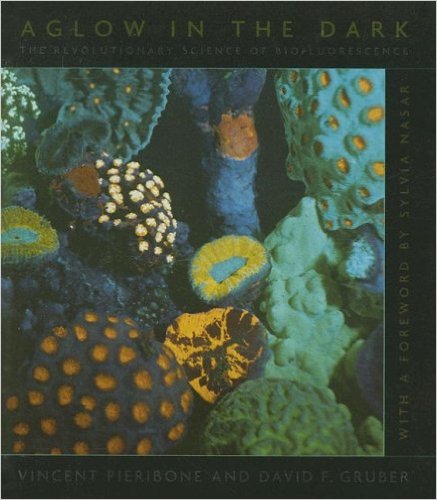





























































































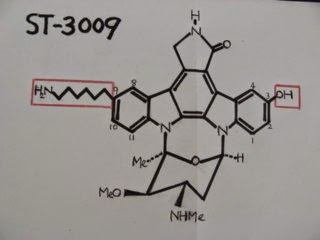







































![アルニカ [ウサギ菊]](https://blogger.googleusercontent.com/img/b/R29vZ2xl/AVvXsEilqv0qou-4NpoUh1PFWYK0FSaozKazee0VYGxsFtfjBma46ya9yxqB6X9Ziuob25tNRpBbnFIcUFlOEjz1WcAjVNzjGl1E-QbDgE7VOLkjZDx0eplJ1WJHf0fTEWXxf8F5G-cHUhqHELY9/s1600/ArnicaS.jpg)


















































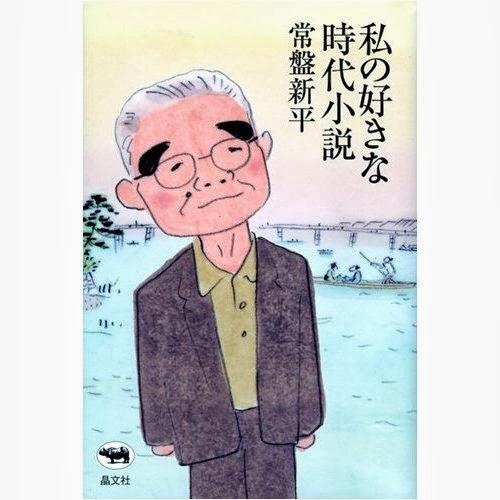










































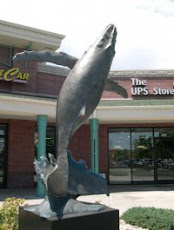










































.jpg)
















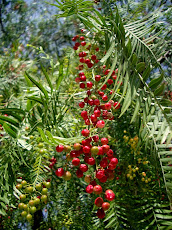















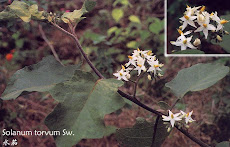







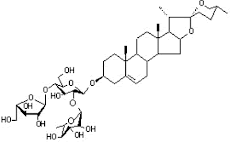















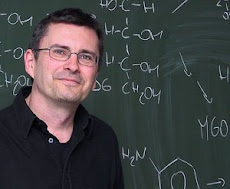


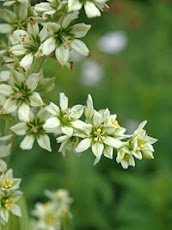












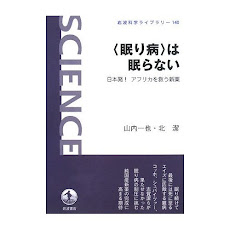












.jpg)















































